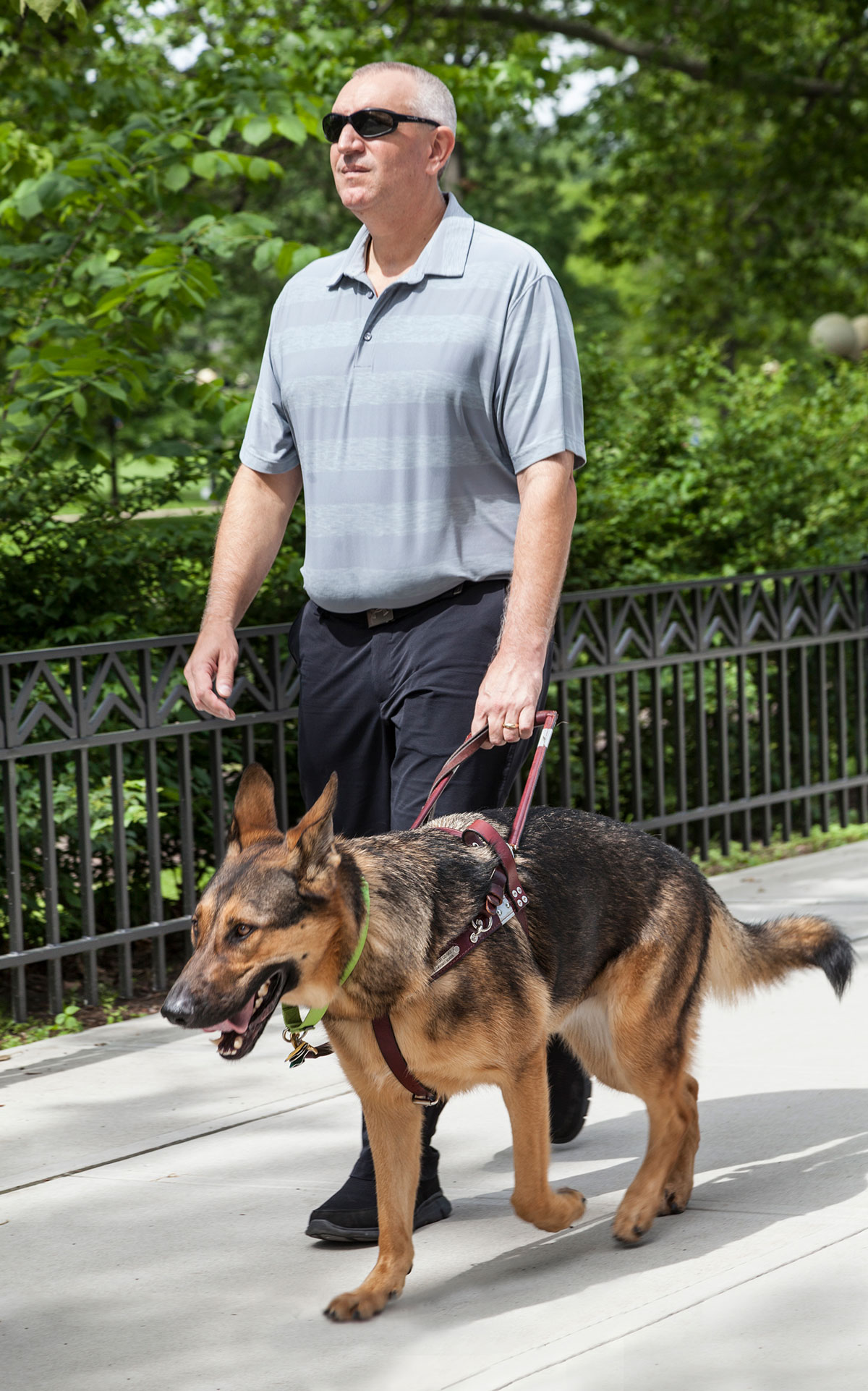Eschenbach has spent more than 100 years addressing the needs of low vision patients. Its typical product line includes magnifiers and electronic devices for the visually impaired. Those kinds of products can provide assistance, but the company’s new partnership with a Connecticut-based non-profit is providing one lucky patient with an aide that can help them navigate their world and that will love them back: a seeing eye dog. The announcement was made at the Vision Expo West meeting in Los Vegas.
“Guide dogs are an invaluable tool,” explains Ken Bradley, president of Eschenbach. “And demand for this service far exceeds supply.” The philanthropic initiative will sponsor the breeding, raising and training of one future guide dog with the Fidelco Guide Dog Foundation. Even just that one canine will require an incredible investment of time and funds, estimated at 15,000 hours of training over the course of two years and approximately $45,000. “Fidelco places these dogs with clients at no cost,” explains the foundation’s CEO Eliot Russman. Additionally, Fidelco follows up annually with the 10-year placement to ensure both human and canine are safe, functioning and well-cared for by one another.
 |
| With the help of the Fidelco, Eschenbach will provide a guide dog to a lucky patient. |
The announcement included an appearance by Cathy Beaudoin, PhD, a former professor at the University of Vermont, herself blind and a two-time Fidelco client, who appeared with her current guide dog, Winnie. Dr. Beaudoin, wiping tears from her eyes as she spoke, explained what made her so emotional. “The quality of my life is so much better with the dog than it was with the cane. The cane made people cross the street to avoid me. The dog makes people cross the street to greet me.”
Fildelco breeds a unique line of German Shepherds—a “breed within a breed”—selected for their intelligence, temperament, stamina and desire to work. Mr. Russman says of the puppies Fidelco breeds, 55% go on to become guide dogs, which may be twice as many as other organizations’ success rates. The dogs that don’t make it often go on to other highly demanding service positions such as police or therapy dog work. Once they’re retired, Fidelco even helps facilitate the dog’s placement in a loving home. In fact, Mr. Russman has even taken a retired guide dog into his own home. “They are loving, very social and very relaxed” at that point, he says, although it took some time for the dog to get out of the habit of taking him to the bus stop—presumably a duty from its former human.

